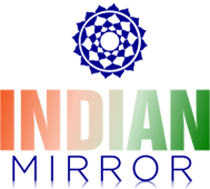AI-generated ‘Ghibli’ animations are impressive. But are they art?
There’s a quiet magic in every Studio Ghibli film, a beauty that lingers long after the credits roll. It’s in the way Chihiro stumbles while putting on her shoes in Spirited Away, a small but deliberate touch of realism.
It’s in the four-second earthquake sequence in The Wind Rises, which took animator Eiji Yamamori over a year to complete, frame by painstaking frame.
It’s in the way light filters through the trees in My Neighbor Totoro, reminding us that sometimes, the simplest moments are the most profound. Ghibli’s animation isn’t just about looking beautiful; it’s about feeling alive.
And yet, with the click of a button, AI now claims to “Ghiblify” anything.
Since OpenAI’s latest update, social media has been flooded with AI-generated images in the style of Hayao Miyazaki’s films. Bollywood blockbusters, internet memes, even real-life photographs are suddenly reimagined with the soft watercolors and hand-drawn charm of a Ghibli movie. It’s whimsical. It’s impressive. But is it really art?
It’s not hard to guess what Miyazaki himself would think. The legendary animator has never hidden his disdain for AI-generated work. In a now-famous 2016 clip, when shown an AI-generated animation demo, he called it “an insult to life itself.”
Some dismissed this as the grumblings of an old-school purist, but his words feel more relevant than ever. Because here’s the thing: AI can replicate Ghibli’s aesthetic, but it will never capture its soul.
Art isn’t just about the final image, efficiency, or automation. It’s about the hands that shape it, the stories woven into it, and the years of dedication behind it. It is about the imperfect, the irreplaceable, the deeply personal.
Ghibli films are built on imperfections, on the human touch that breathes life into every frame. Animators spend years refining their craft, not just to make things look good but to make them feel real — the weight of a character’s step, the hesitation in their movements, the way the wind rustles through their hair.
Miyazaki, a war child, translated his imagined childhood into his art, infusing every frame with memory, longing, and human experience.
Source:indianexpress


Article comments